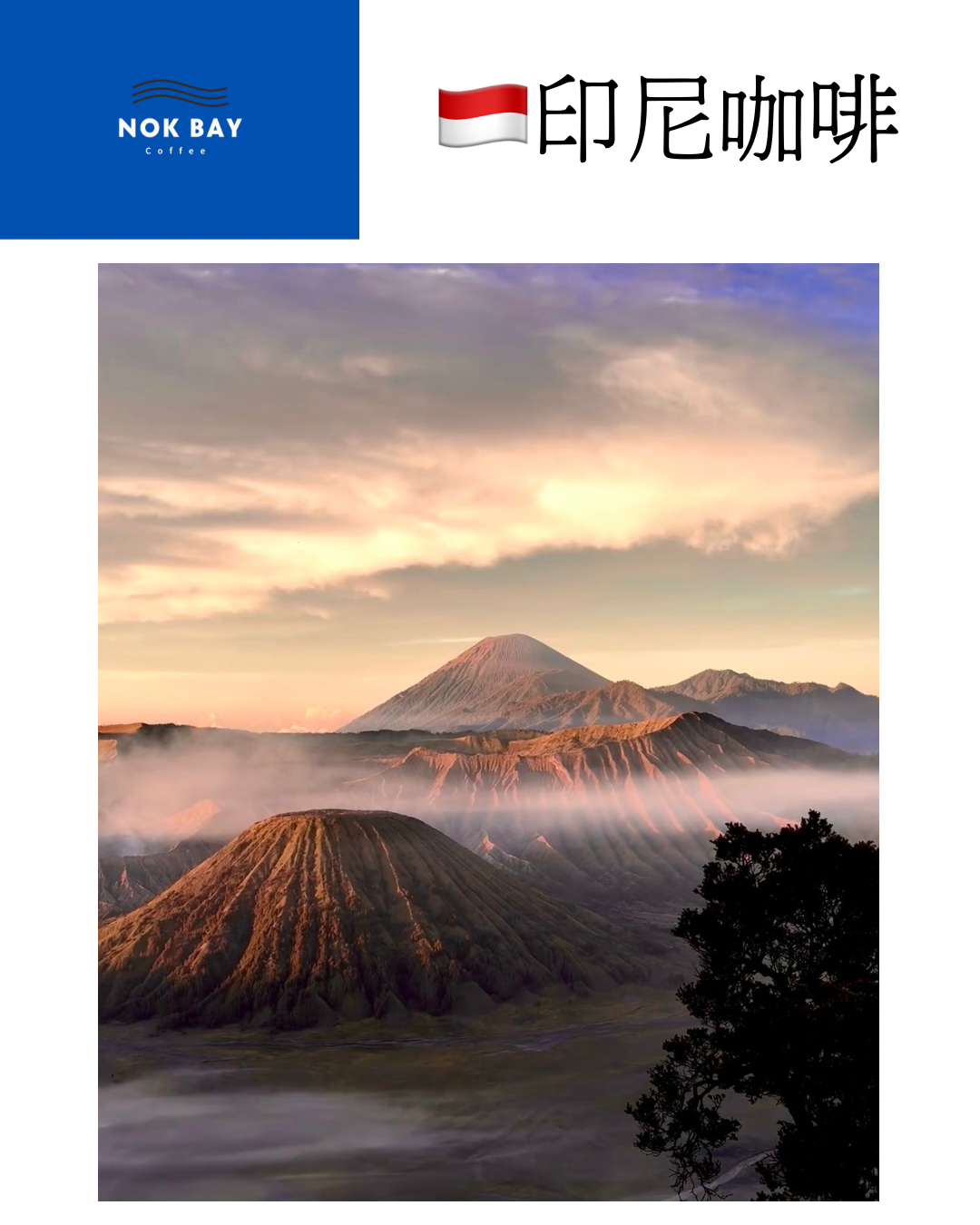
Introduction to Indonesian Coffee
Share
Indonesian Coffee Indonesia is the world's fourth largest coffee producer (2024 statistics) and one of the most important coffee producing countries in Asia. It is famous for its unique terroir, diverse varieties and iconic processing technology. The following is a comprehensive analysis of the history, production areas, varieties, flavors and the current status of the industry:
1. History and Industrial Development
1. Origin in the Colonial Period Indonesian coffee began in 1696 when Dutch colonists introduced Arabica species from Yemen and successfully planted them on the island of Java. It was first exported to Europe in 1711 and became the global coffee trade center for a time.
- Leaf rust impact: In 1877, leaf rust destroyed most of Indonesia's Arabica plantations, forcing them to switch to Robusta, which is more resistant to the disease. Today, Indonesia is the world's largest Robusta producer (accounting for 90% of total production), while Arabica only accounts for 6-10%.
- Transformation to premium products: After 2010, production areas such as Sumatra and Sulawesi promoted premium beans, such as Mandheling and Toraja, to gradually get rid of the label of "instant raw materials".
2. Core production areas and characteristics
Indonesia’s coffee producing regions are scattered across several volcanic islands, each with its own unique terroir:
1. Sumatra
- Mandheling: It is grown in the vicinity of Lake Toba in North Sumatra. It is processed using the Giling Basah wet hulling method. It has a rich flavor with herbal and woody notes. Classic varieties include Typica.
- Lintong: Located in the southern part of Lake Toba, it has a higher acidity and is often associated with dark chocolate and caramel sweetness.
- Gayo: Grown around Lake Tawa in Aceh, it has a high percentage of organic farming and has a floral and citrus flavor.
2. Java
- Indonesia's earliest coffee producing region, famous for its washed Arabica with a balanced flavor and low acidity. State-owned estates such as Blawan mainly produce S795 varieties, which have a nutty and brown sugar sweetness.
3. Sulawesi
- Toraja: A high altitude wine region, semi-washed, with complex flavors of caramel, ripe fruit and smoky tones. The annual production is only 1,000 tons, making it very rare.
4. Bali and Flores
- Bali is famous for its Kintamani coffee, which is intercropped with citrus crops and has a fruity aroma; Flores is an emerging production area with a clean flavor like tea.
3. Varieties and processing technology
1. Main varieties - Typica: An original variety from the Dutch colonial period, now found in the high altitude areas of Sumatra.
- Tim Tim (HDT): A natural hybrid of Arabica and Robusta, it is highly disease-resistant and has a wild flavor with a hint of maple syrup sweetness.
- Catimor: An artificial hybrid, generally considered inferior in flavor, but the Ateng-Jaluk variety from Aceh performs well.
2. Iconic treatment
- Wet Hulling: Invented in Indonesia, the parchment is removed when the coffee beans are semi-dry, which speeds up the process and reduces acidity, giving it a rich earthy and woody flavor.
- Kopi Luwak: Robusta beans are fermented in the body of civet cats, and the flavor is silky and herbal, but there is much controversy over the ethics of its farming.
4. Flavor characteristics and market positioning
1. Flavor commonality
- Low acidity and high body, with main notes of earth, wood, spice and dark chocolate. The wet shaving method enhances the rich taste.
- Premium beans such as Toraja and Golden Mandheling (certified by PWN) show bright acidity and caramel sweetness.
2. Market role - dominated by commercial beans: Robusta is used for instant coffee and Italian blends, accounting for the majority of exports.
- Premium breakthrough: Mandheling, Toraja and others have been recognized by international competitions. In 2024, Indonesia's premium bean exports increased by 358%.
V. Challenges and Future
1. Climate Threat
- Erratic rainfall patterns and the resurgence of leaf rust threaten Arabica production, and disease-resistant varieties need to be continuously cultivated.
2. The plight of small farmers
- 90% of coffee is produced by smallholders (average farmland is 1 hectare), and technology and funding limit quality improvement.
3. Sustainable Development
- Promote organic certification and fair trade, such as the Aceh Gayo production area obtaining Rainforest Alliance certification.
Indonesian coffee has evolved from a cash crop in the colonial era to a fine product that combines terroir and craftsmanship. Whether it is the mellow Mandheling from Sumatra or the complex Toraja from Sulawesi, every cup carries the gift of volcanic soil and the sedimentation of centuries of history. If you want to experience its unique charm, you can start with Golden Mandheling to feel the low-acid and rich oriental charm, or try Toraja to explore the flavor layers of the tropical island☕️.
Coffee beans product details: https://is.gd/Pib179
(Click the link for screenshots)
There are also discounts on Italian blended beans and drip ear beans. Free shipping is available for a limited time when shopping online. Online store: www.nokbay.com
FB / IG : Nokbay coffee
WhatsApp : 9845 1173
#精品咖啡豆#手灌咖啡豆#限量上#爆味#nokbaycoffee #CoffeeOrigins #拖耳包#冷抽咖啡#意式咖啡#印尼咖啡豆
